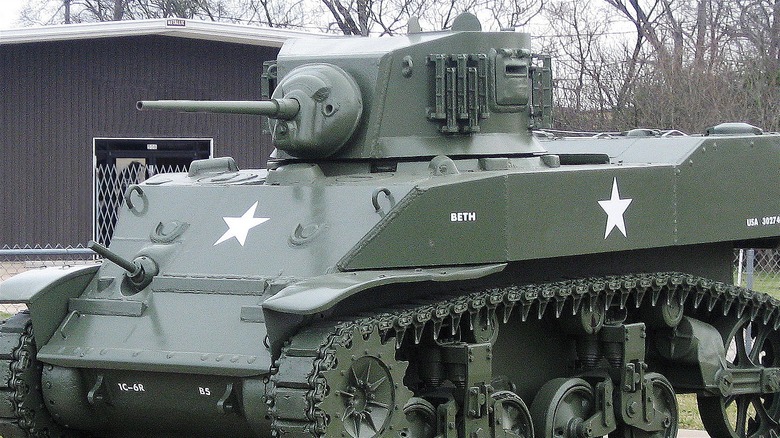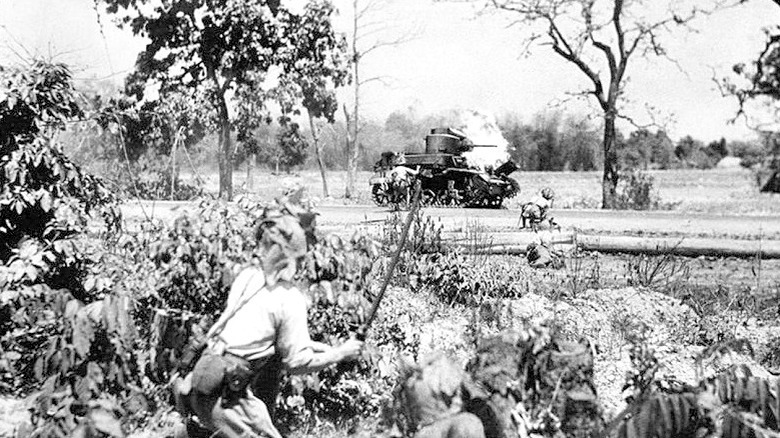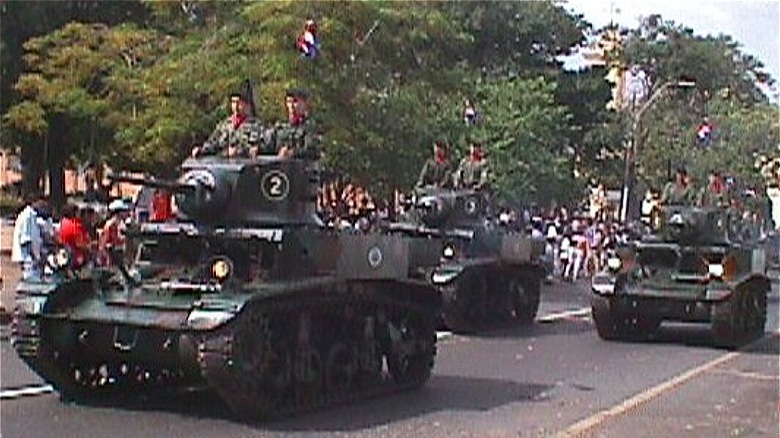
Wikipedia
When it comes to military conflicts, tanks occupy a special place in history. While some are heavily armored and meant to take a beating, others are used for infantry supporting roles and reconnaissance, like the vaunted M3 and M5 Stuart and its variations. Originally, the U.S. started the groundwork on it before World War II. The first version of the M3 was called the Stuart, and it was used by the British forces in 1941 after receiving them from the United States due to the Lend-Lease Act. However, the British found the Stuart somewhat hard to place in battle, being neither heavily armored enough to act as a true infantry support unit, and too slow to be considered a cruiser. This did not stop the M3 and M5 Stuart from being used though, with some British soldiers nicknaming the M3 “Honey” for its ability to “shoot and scoot,” and it was often deployed in a cruiser role nevertheless.
Although generally unsuitable for prolonged armor to armor conflict against opposing Axis tanks, the Stuart made up for its lack of armor and firepower by being lightweight and somewhat faster than some of its contemporaries, with a speed on roads being around 36 mph on and 18 mph off road. The Stuart quickly became a favorite among infantry for its ability to provide cover and support for soldiers on the ground, though it doesn’t rank among the greatest tanks of all time. In addition, the M3 and its immediate variants like the M3A1, M3A3, M5, and M5A1 were also utilized in reconnaissance operations. Though the United States no longer uses the M3 line of tanks, favoring the M1 Abrams now, Paraguay’s military still had 10 in use with four in storage as of 2015.
{Featured image by Jim Evans via Wikimedia Commons | Cropped and scaled | CC BY-SA 4.0}
The M3 Stuart and its variants boasted similar specs
Wikipedia
Whereas some tanks focus on the biggest guns and the thickest armor, the M3 and M5 tanks were practical. The heavy armor and weapon of some tanks usually means a tremendous lack of mobility, and in many combat situations, the ability to quickly move around and respond can have more of a premium than one might expect. As such, the specifications of the M3 definitely highlight that the tank wasn’t made to go up against armored targets.
The dimensions of the M3 Stuart are around 14 feet long, around 7 feet wide, and around 7 feet high. Weighing 14.7 tons, the M3 Stuart also used a seven cylinder 250 horsepower engine that gives it a range around 75 miles traveling at medium speeds. The M3 also features a 37mm main cannon, complimentary M1919 machine guns, and armor that ranged between 13 to 51mm, or .5 inches to 2 inches. Likewise, even the upgraded M5 Stuart boasted similar qualities, weighing 16.5 tons and measuring around 14 feet and 2 inches long, 7 feet and 4 inches wide, and 7 feet and 6.5 inches high. The M5 Stuart still utilized a 37mm cannon, as well as M1919A4 machine guns and armor that ranged from .375 inches to 2 inches thick. In other words, a layman may have trouble distinguishing between different Stuart versions.
{Featured image by Imperial Japanese Army via Wikimedia Commons| Cropped and scaled | Public Domain}
Paraguay still had 10 M3 Stuarts in 2015
Wikipedia
What made the M3 and M5 Stuart tanks so popular was their adaptability. While large and heavy tanks are generally cumbersome and require support themselves, the M3 and M5 were fast enough to support infantry operations, which made them a valuable asset when it came to dealing with fortified machine guns, covering the movements of soldiers, and reconnianscence. Typically crewed by four, these tanks are considered “light.” Still, even two inches of armor can stop most small arms fire.
Though most of the countries that used the M3 and the M5 have moved on from them, Paraguay had 10 in active duty as of 2015. The Stuart has seen warfare rapidly change over seven decades, going from large scale battles with combined arms to much more limited engagements, but the need for a maneuverable and versatile tank has remained the same. One thing is for certain, there aren’t many tanks that can boast such a long and continuing career as the M3 and M5 Stuarts.
{Featured image by Rolgiati via Wikimedia Commons | Cropped, scaled, and sharpened | CC BY-SA 3.0}
>>> Read full article>>>
Copyright for syndicated content belongs to the linked Source : SlashGear – https://www.slashgear.com/1322283/ww2-tank-served-70-years/












